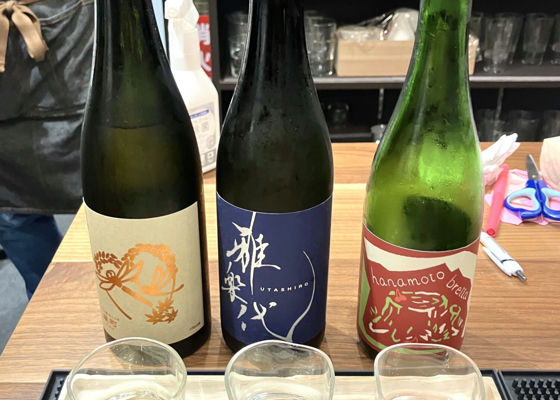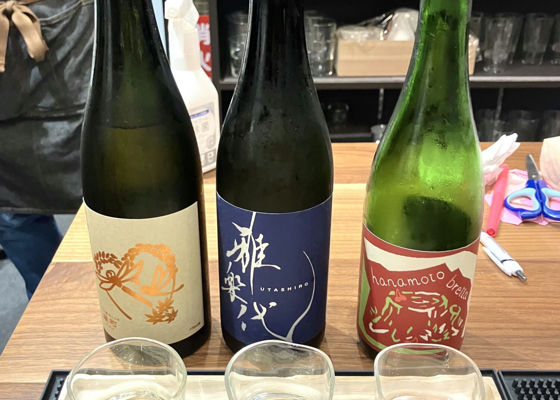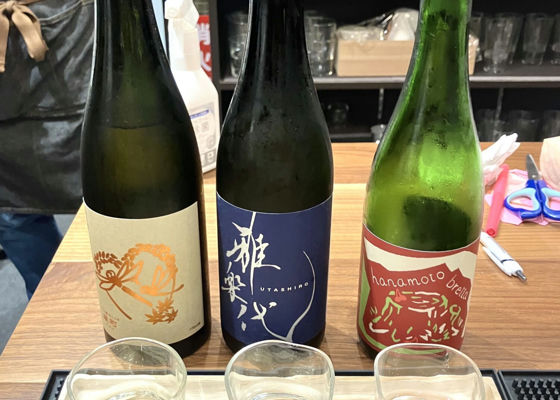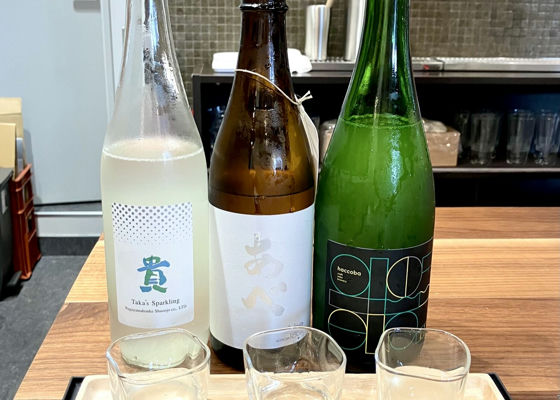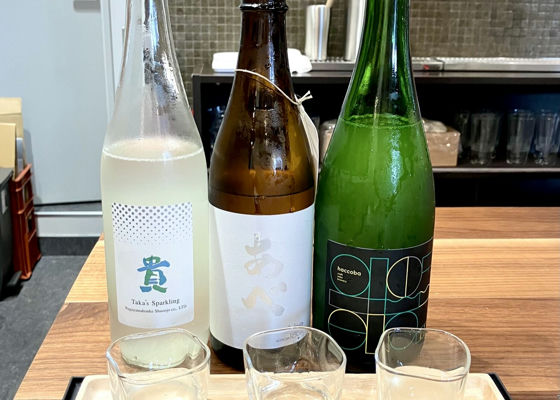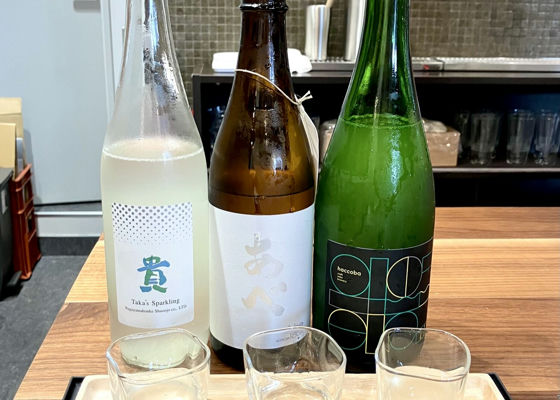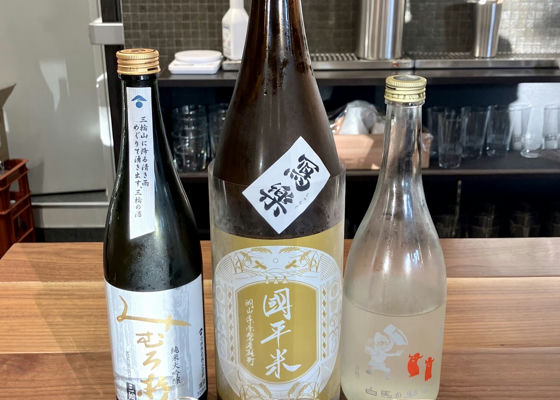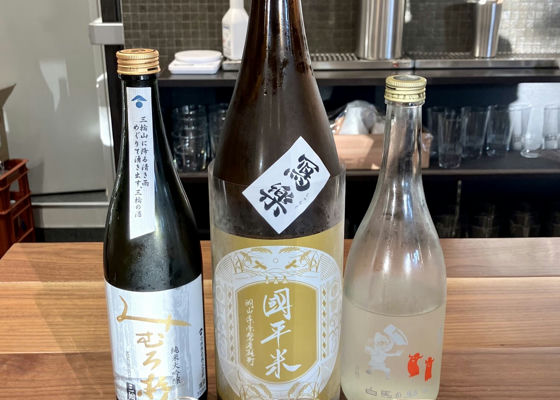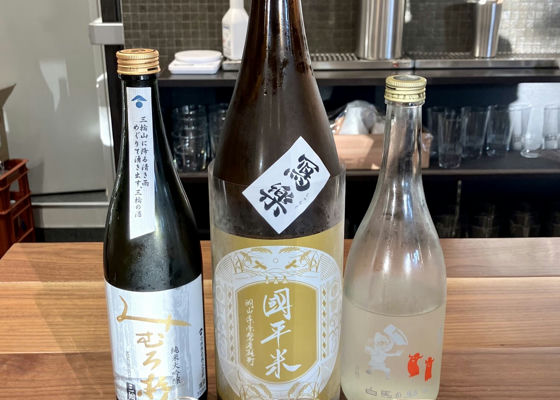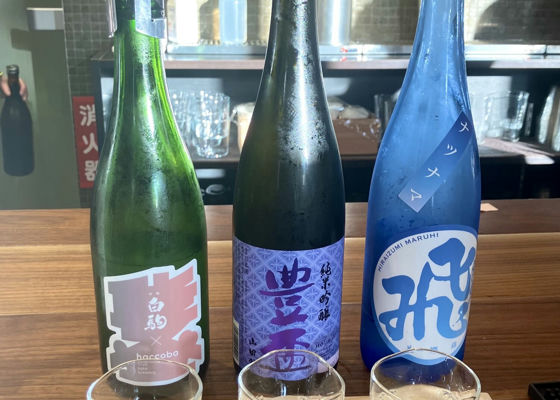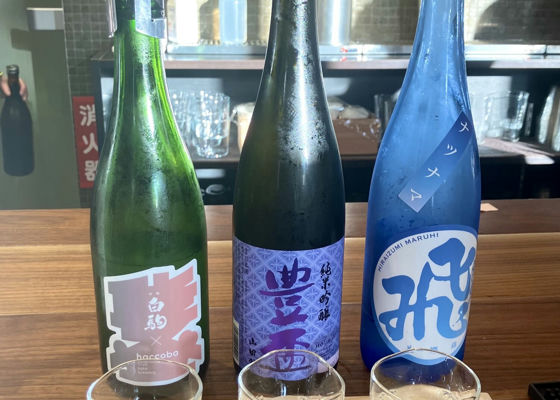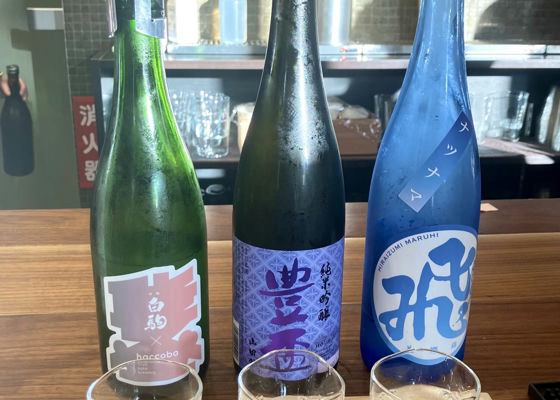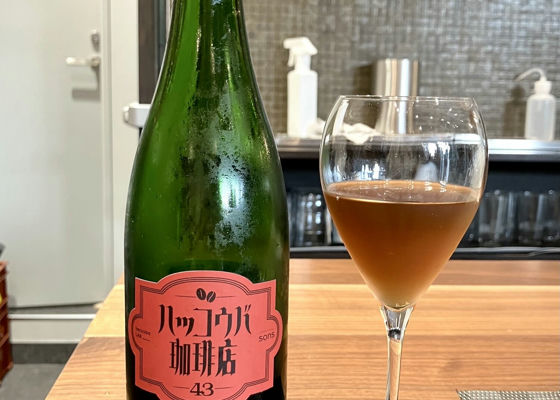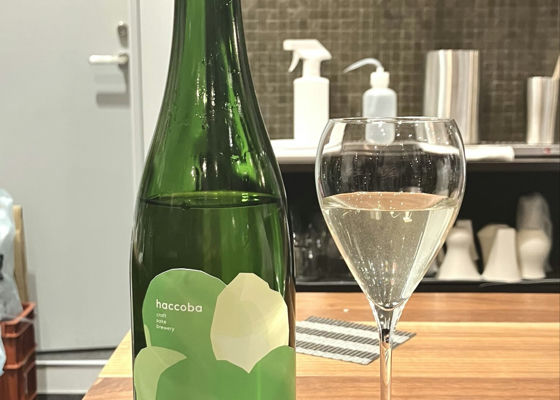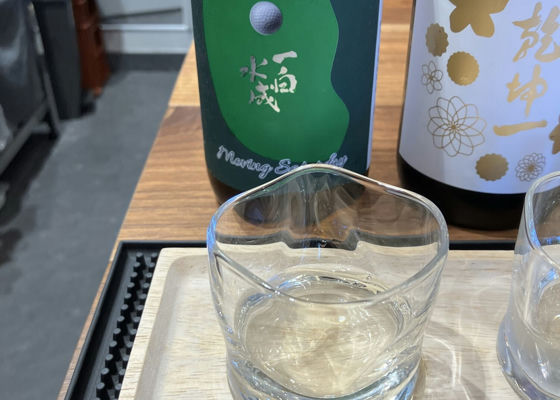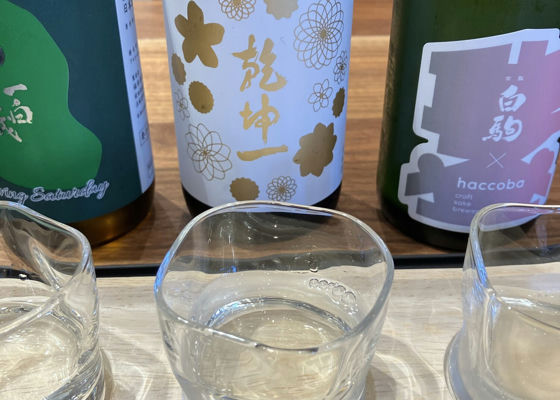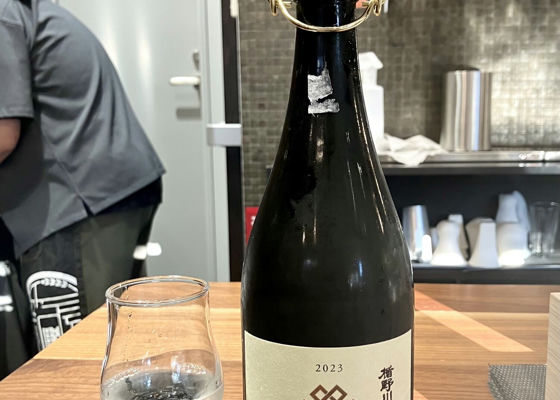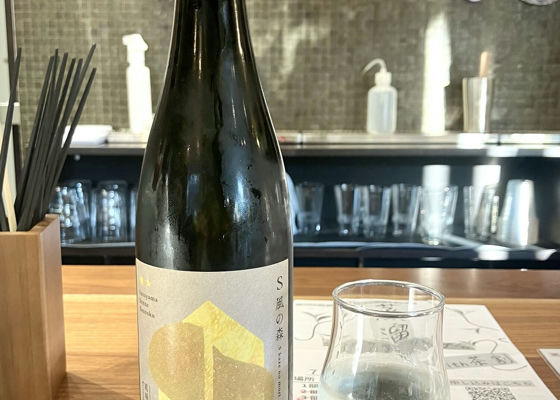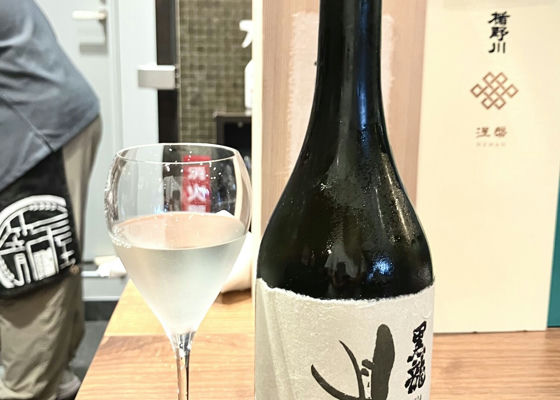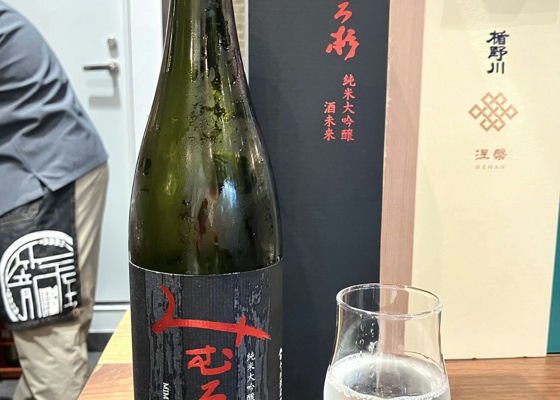Timeline
K(Left photo)
Strong and thick mouthfeel, typical of Omachi, as is typical of autumn sake.
It has a heavy taste with a sense of grain.
This is the kind of sake I would like to drink with a well-flavored meal.
I think I've come to think that this kind of sake is also delicious.
4.00 K(Right photo)
I guess I'm gradually getting used to craft saké, so there's nothing particularly new or impressive about it...
Delicious, but
The acidity and the heaviness that may have come from the rice are a little too strong...
I'm not sure if the level is a little too high for me to understand the wildness...
4.25 K(middle photo)
Muscat-like freshness, sweetness and acidity.
A freshness that is hard to believe it is hi-ire
Sophisticated taste that is typical of Junmai Daiginjo.
The taste is so good that even at this price, it is considered inexpensive.
5.00 K(Right photo)
The contents are kasu [sansho lamonade], which I drank before.
It has a little more umami and less sweetness than the first batch, but it is still delicious!
But I think my favorite was the first batch, though it may be due to the time of year.
I'm glad to see this direction, because at this size and price, it's just about within reach for home drinking.
4.25 K(middle photo)
Clear, pleasantly sweet and acidic, with a slightly umami aftertaste.
A well-balanced sake with a clean, light sweet taste, just like Abeno's standard.
It lacks the impact and noteworthiness of Abé's other color series, so I give it this rating.
4.25 K(Left photo)
It has a strong sweet flavor for a dry beer, and the aftertaste is a little long. It has a shwashiness, but not as much as a strong carbonation, so it's not as refreshing as it should be.
Maybe it's because it's so hot, but I feel there is a discrepancy from the image on the label, which is to enjoy a refreshing drink outdoors.
3.75 K(Right photo)
It has a very strong fruity-juicy flavor that you wouldn't think so if you didn't hear that it was sake.
The sweetness, acidity, and umami are strong, like fruit juice from red fruits such as strawberries and apples.
I thought the acidity was like white yeast, and I was right.
The taste is fresh because it is a fresh nigori, but it comes out quickly and disappears quickly as if it is mixed with the freshness.
4.75 K(middle photo)
I thought I would never be able to drink it because the four-pack was sold out, but I had no idea that it was on the menu here in the store!
The first sip gives a refreshingly fruity impression.
The taste is sweet and sour of grapes.
A little bit like Shinsei
The wine has a clean and refreshing aftertaste.
4.75 K(Left photo)
Quintessential taste!
Elegant and gentle sweetness, slight bitterness from the slight acidity that remains.
All in all, it is a beautifully balanced Junmai Daiginjo!
Even 2,200 yen without tax seems cheap!
No wonder they need points at Kagoya!
5.00 K(Left photo)
A fairly sweet sake, but with a hint of spice in the back.
I don't like pakuchi, but it is not at all unpleasant, but rather adds a nice accent to the sweet and tasty acidity of the sake.
There is a salty taste, or rather a mineral taste like sea salt.
I would like to drink this sake without knowing any prior information.
Very interesting!
4.50 K(middle photo)
Fruity at first, suggesting lightness.
However, what comes through later is the richness typical of Toyo Sakai and the full flavor of Yamadanishiki.
The color of the label is only apparent until the first sip, but the finish is full of umami and has a long aftertaste.
4.00 K(Right photo)
Sweet and juicy, but thanks to the refreshing lemon-like acidity, this sake is very easy to drink in spite of such hot weather!
It is the embodiment of what we are looking for in a summer sake!
It has a juicy taste, but at the same time, it has the satisfaction of being sake.
5.00 K(Re-check-in for re-compilation)
This is a sweet coffee.
It smells like coffee.
Tastes like coffee with a lot of syrup
It's sweet from the beginning to the middle.
The aftertaste is more coffee bitterness than umami.
The sake-like taste is the least I've ever tasted in Hakkouba.
Delicious, but Kahlua would be better.
4.50 K(Re-check-in for re-compilation)
Lemon-like acidity is the predominant taste, and the sweetness seems to be drowned out.
There is a certain amount of fizziness, so much so that if you were told it was a tonic soda, you would think it was, but maybe because you are drunk?
Hopiness is present from the middle to the end (especially on the back end), and is much less pronounced than in Hanafu.
Seriously, it's like a juice.
It's the same 13% as Shinsei and Koshinohomare Qn Namato... scary!
4.75 KThe highest quality sake ever, surpassing the previous day's Mimuro Cedar in a paulownia box, and the highest purity sake ever!
Naturally gentle from start to finish, light and precise!
I don't have the palate and vocabulary to taste such a high quality sake!
Even so, the price is too good to be true!
I think it's almost at cost, or if anything, below cost...
4.25 KS wind forest new work on the day of the ban.
What a fourth kind of S Kaze no Mori!
The most Kaze no Mori-like so far, with a sweet flavor reminiscent of mellow bananas.
The taste is juicy and tender, but the aftertaste is so clean that it feels more refreshing than Akitsuho 657, without any cloying taste at all!
This is great for a low-polished rice!
4.50 KNose very mild but floral
I would like to pair this with fine Japanese food.
The sweetness is moderate and is intended for a mealtime sake, but the umami has a strong presence on its own and is sharp and crisp.
The aftertaste is fleeting and beautiful.
A sake that can be enjoyed in both hot and cold weather.
4.50 KThis is Mimuro Cedar which is not that expensive (sensory numbness).
I was curious about it, but with the price..., I never thought I would have a chance to drink it.
This is the juiciest Mimurosugi I've ever had.
It has a cute sweet and sour taste like peaches and strawberries.
Mellow, yet light on the palate.
It's really a beautiful sake!
4.75 RecommendedContentsSectionView.title
